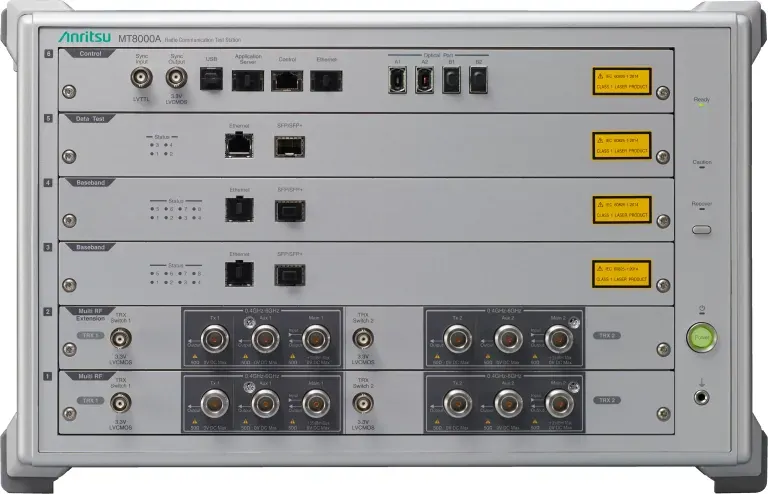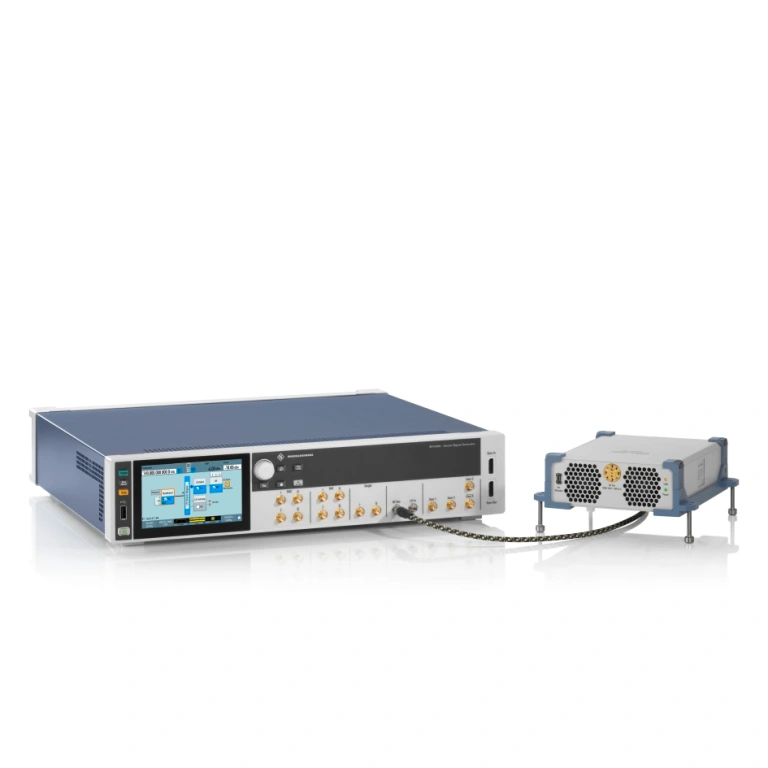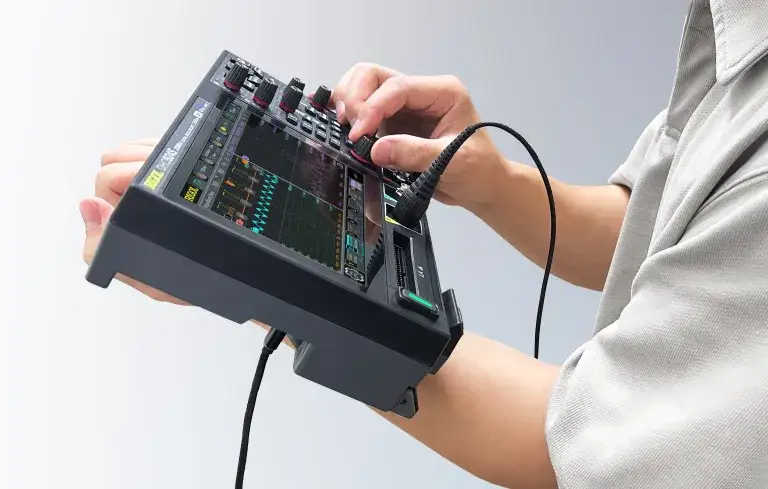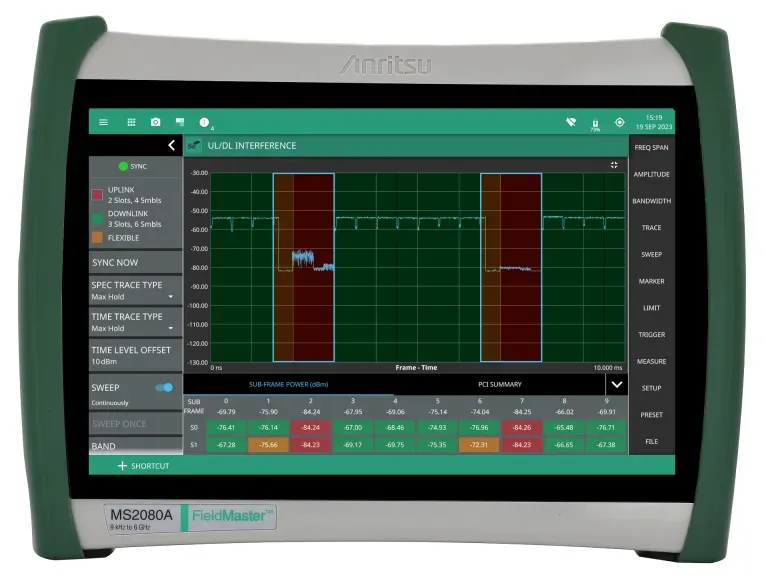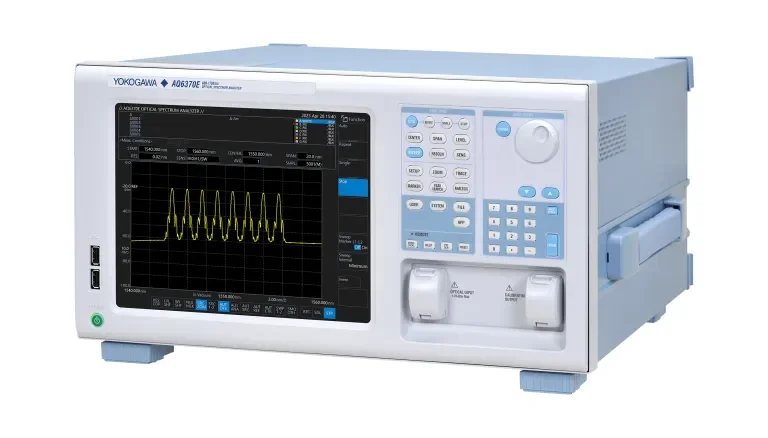
Tektronix Inc. has launched the latest upgrade to its mid-range mixed-signal oscilloscope (MSO) offering with the introduction of its 4 Series B MSO with advanced capabilities. The new MSO features faster and more precise performance capabilities, improved user experience, advanced analysis capabilities and remote operation.
The 4 Series B MSO also offers the same signal fidelity as the earlier-version 4 Series, with bandwidths from 200 MHz to 1.5 GHz, real-time sampling at 6.25 GS/s and up to 16-bit vertical resolution. It includes the same touch user interface but with a new computer platform (an upgraded processor system), offering twice the responsiveness for faster advanced analysis and data transfer speed. It is also supported by a suite of Python drivers.
Market drivers
The mid-range oscilloscope market is impacted by several key factors. These include increased data communication, a focus on power efficiency, greater complexity of electronic system design, more sensors and connected devices, and regulatory compliance and standards.
This has driven the need for a faster time to insight to accelerate design cycles, according to Tektronix. For instrumentation, this means a greater need for responsiveness, throughput, connectivity and ease of measurement.
The key market drivers in the mid-range scope segment are the growth of generative AI, so the overall demand for increased data being accessed, used and transferred; the rising need for power electronics and power efficiency; and more connected sensors and devices that capture what’s happening in the environment and then analyzing the data, said Daryl Ellis, general manager of the mainstream portfolio at Tektronix.
This creates more test points and use cases for testing devices, he added.
Ellis said the combination of the faster data, the amount of data being transferred, how power is managed and distributed and doing it more efficiently at higher power levels, and the IoT movement with more sensors and smart devices also drives regulatory and compliance standards.
“With that, you see more testing happening and also automated validation to ensure that compliance standards are met, as those are being defined and iterated on a daily basis,” he added.
“It’s not just about acquiring the data; it’s about getting the insight from the measurement and then being able to use that insight to reduce and accelerate the design cycles that are required in order to get to production and on into the market,” Ellis said.
For instrumentation, this requires responsiveness with real-time feedback, connectivity that allows for the maximum speed required for throughput and overall data size, and ease of measurement, or intuitiveness, so anyone from a junior engineer to the most seasoned engineer can use that instrument to get to that insight even faster, he explained.
Also important is the throughput of the instrument. “It’s not just throughput or the speed of the data but that amount of data that is being sent from the instrument to a host, and now, there are more increasingly new and innovative ways and mechanisms for transferring data between the instrument and the host,” Ellis added.
Series 4 B oscilloscope
Tektronix has worked on the follow-on to the existing 4 Series oscilloscopes for about three years. The team rebuilt the scope from the ground up with new construction and a new computation platform to meet new requirements for speed, accuracy and ease of use, paired with its touch user interface, said Jeffrey Miller, product marketing manager for the mainstream oscilloscopes at Tektronix.
“Our engineers have added significant new capability by building a new processor into the scope—an Intel Atom 64-bit processor,” Miller said. “With that processor comes new RAM, new display processing technology, a new motherboard and a whole lot of other subsystems to build up all these capabilities.”
“The [new] processor enables intuitive quick control from any user operating from the front panel, and the UI has been really focused to make everything available with just a couple of touches,” Miller said. “We have a rule that nothing is allowed to be in more than two levels of menus. We want to make sure that people can get the data off the scope how they want in a way that is fast and responsive.”
The Series 4 scope has been a good successor to the MDO4000, but with all these new demands, Tektronix needed to be able to support customers with an instrument that is more powerful and more capable to continue developing it in the future, Miller explained.
Tektronix has also completely rearchitected software that pairs well with all this new hardware to make sure that everything works together seamlessly without any bottlenecks, he added.
The new processor has allowed Tektronix to leverage the new software architecture to build in some of the free features, released as part of its software release program, Miller said.
Two of the most recent features include measurement annotations for reference levels and timing for measurements and waveform histograms that provide insight into things like noise and jitter.
The upgraded processor system also speeds up remote operation. The new scope can be remotely accessed and controlled using a web browser, dedicated TekScope PC software or a custom program via a full programming interface. The 4 Series B supports Tektronix’s eScope proprietary web browser control software for remote control and communications and the TekDrive cloud file management software.
Almost everything in the scope has been touched by these performance improvements, Miller said. In addition to the touch panel UI with twice the responsiveness, the measurements and serial decoding are significantly faster, covering the automated measurements like frequency peak-to-peak measurements, advanced power measurement like power supply characterization, wide bandgap and automotive standards, he added.
It applies to all the serial decodes. The upgrade enhances time to answer on over 25 serial decode packages supported on the platform, such as for inter-chip, automotive, power and aerospace buses, and it speeds up algorithms and plotting used in existing analysis packages for power supply measurements, motor drive analysis and double-pulse testing.
Remote data transfers are also about 50% faster, Miller said, and for customers who aren’t working remotely and may be using sneakernet (transferring electronic data via media), the Series 4 B MSO offers two new USB 3 host ports to make transferring files to and from those drives significantly faster. “It’s about 10× faster than we’ve seen with the USB media on previous scopes.” Other interfaces include Ethernet, HDMI and USB 2.
Tektronix wants to provide users with better and more analysis options and get them their answers more quickly by doing the processing faster and providing better insights with visualizations and advanced graphing capabilities, Miller continued. It also includes embracing and meeting this trend in automation and remote access as users are starting to adopt it, as well as meeting all their needs when it comes to programming, whether it is Python or SCPI, he added.
Other features include up to six input channels, making it well-suited for three-phase power analysis, and the exclusive Spectrum View RF analysis software, which provides multi-channel spectrum analysis in sync with time-domain waveforms. It also features a 13.3-inch, (1,920 × 1,080) HD display with a greater screen contrast and viewing angle thanks to its optical bonding process. In addition to its 12-bit analog-to-digital converters and high sampling rate, the 4 Series B shows in-depth signal detail.
Another benefit is that all of the 2, 4, 5 and 6 Series scopes use the same touchscreen user interface. “Anybody who is learning how to use any of these scopes can immediately transition to any of the others,” Miller said. “We don’t want anyone to have to relearn anything, and we also support all the same programming commands.”
Open-source Python-native driver package
A big trend in test and measurement is automation. But test engineers face a lot of challenges, particularly with the SCPI command language, the most widely used by test and measurement instruments. SCPI strings have no syntax checking and no auto-complete or hinting, and debugging can be challenging and time-consuming.
Extending its capabilities in test automation, Tektronix recently introduced an open-source Python instrument driver package free of charge for instrument automation. It will allow users to tailor the software to their needs and share their improvements across a network of developers.
For many reasons, from shorter design cycles to increasing complexity, the modern test engineer in design and validation is increasingly required to write software as a critical part of the workflow, and the most innovative validation departments look more like a software engineering group than a hardware test group, said Rick Kuhlman, general manager of portfolio software at Tektronix.
Python is the most used programming language in the world, and not just for test and measurement but across software developers, Kuhlman added. “When surveying our own customer base, we see a majority of them reporting that Python is their primary programming language, and even when it isn’t, many of those say that they’re moving in that direction.”
Kuhlman also noted that because Python is free and open-source, there is a low barrier to entry. It is also easy to use, so new and experienced engineers can be efficient with the language; it has a huge ecosystem that delivers lots of articles, tutorials, contributors and communities to help; and it is increasingly the language of choice for students, engineers and scientists, he said.
In addition, Python has been onboarding massive new capabilities in scientific, engineering and data science over the last five to seven years, Kuhlman said. “You might have thought of Python as a web framework tool, but since that time, they have onboarded a huge and growing number of sophisticated libraries for engineering around plotting, artificial intelligence, machine learning, user interface, signal processing, complex math, data science and statistics, and the list goes on.”
Pain points
Validation and test or software engineers are all sharing the same set of pains as they try to automate test and measurement equipment, said Andrew McCann, product manager for test automation at Tektronix. “Some of them are building their own drivers in-house because of the lack of support in automation tools.”
By adding Pythonic development tools and code reuse, test automation engineers will be more productive and efficient, Kuhlman said.
One of the biggest pain points is the SCPI command language most used by test and measurement instruments.
“The command set of SCPI is barely a standard across the industry, leading to inconsistent and annoying translations from instrument to instrument, and it is specific to test and measurement, so no one gets exposed to it anywhere else,” McCann said.
“It [SCPI] uses strings that have no syntax checking, and with those strings, you also don’t get any code completion or hinting in those modern development environments,” he added. “Debugging is extremely trial-and-error–driven and time-consuming because of those factors.”
Another challenge is maintainability. “As these code bases grow, there’s no built-in documentation or support that comes along with SCPI besides a 2,000-page PDF manual,” McCann said.
He believes the Python driver package, tm_devices, will alleviate a lot of these pain points, giving customers a modern development platform with many of its instruments.
The driver package works across Tektronix and Keithley devices. The current release supports Tektronix MDO/MSO 2, 4, 5 and 6 Series ; the MSO/DPO70000DX/SX oscilloscopes; the DPOJet application; and the Keithley 2400 Graphical Series SMU instruments. Additional test devices are planned for future releases.
It is built on PyVISA and PyVISA-py, but it can be used with any VISA libraries installed. Another important factor is that this package is designed to work within integrated development environments (IDEs) on any operating system, McCann said.
By integrating into daily workflows and using it with a preferred IDE, customers can now leverage auto-complete, precise type hinting, built-in help, real-time syntax checking and enhanced debugging capabilities for instrument automation.
Version 1.0 of tm_devices will include online documentation that aligns with other Python packages, and it will be available on GitHub using pip as the installation method, McCann said. The package will work offline as well. A step-by-step guide will be available for users who need a little more help getting started.
Tektronix also uses the driver package as part of its development pipeline and quality processes.
This package has its origins with the new framework developed to test the 5 Series before it launched, and since then, it has evolved and matured, McCann said. “Since we use it internally to test, we have a high bar to achieve. Every single command has been tested and evaluated.”
That doesn’t mean it is perfect, he added. “But with the GitHub and open-source approach, we’re letting every user have access to our project to submit any errors they find, maybe even the fixes, and any features they want to see, as well as to keep our dialogue with the community open.”
